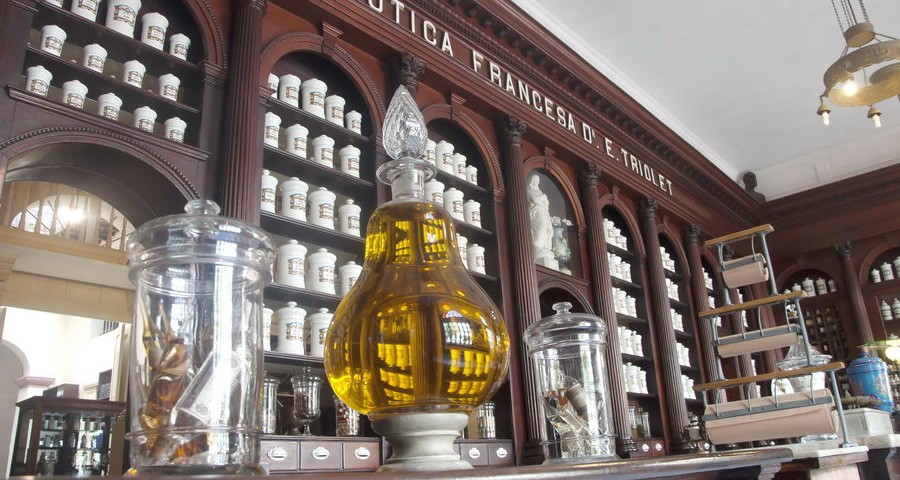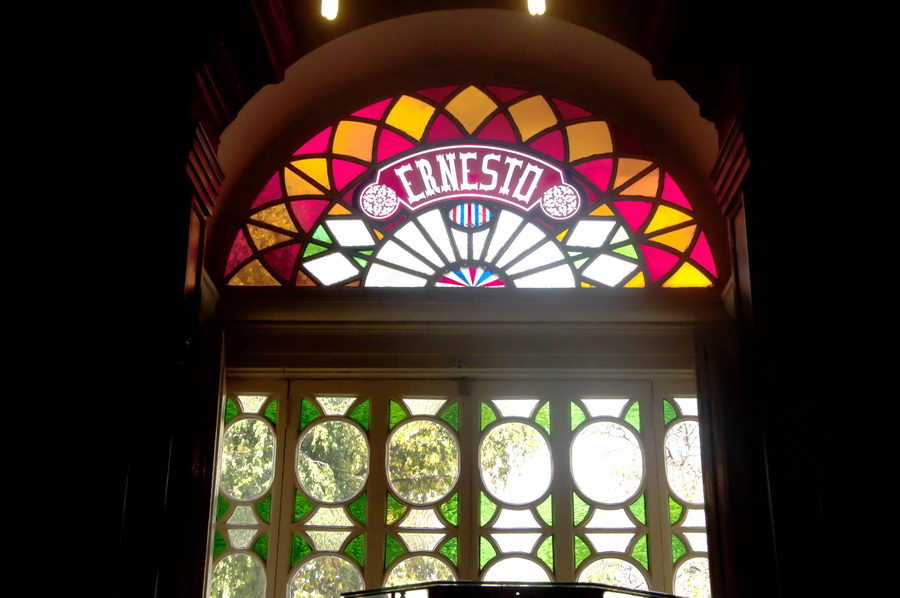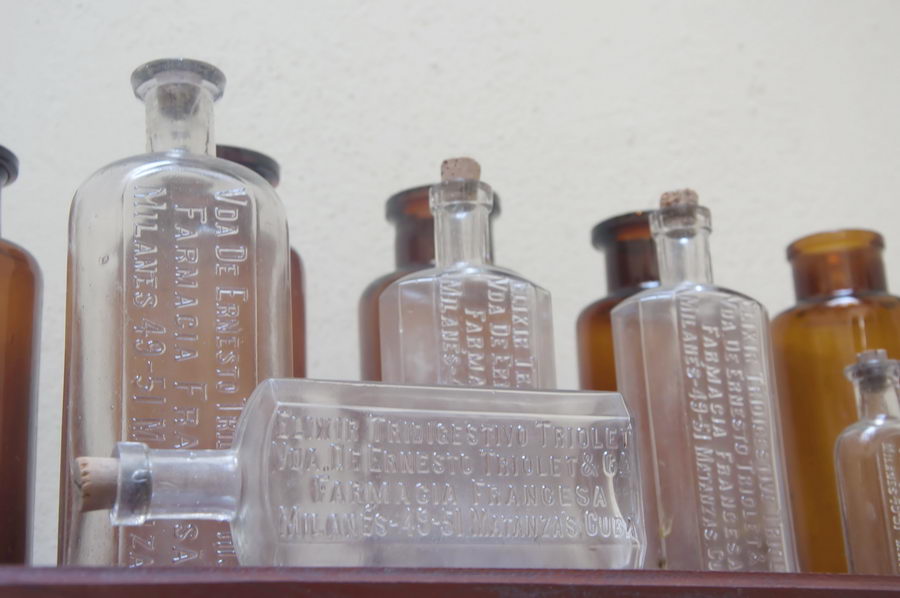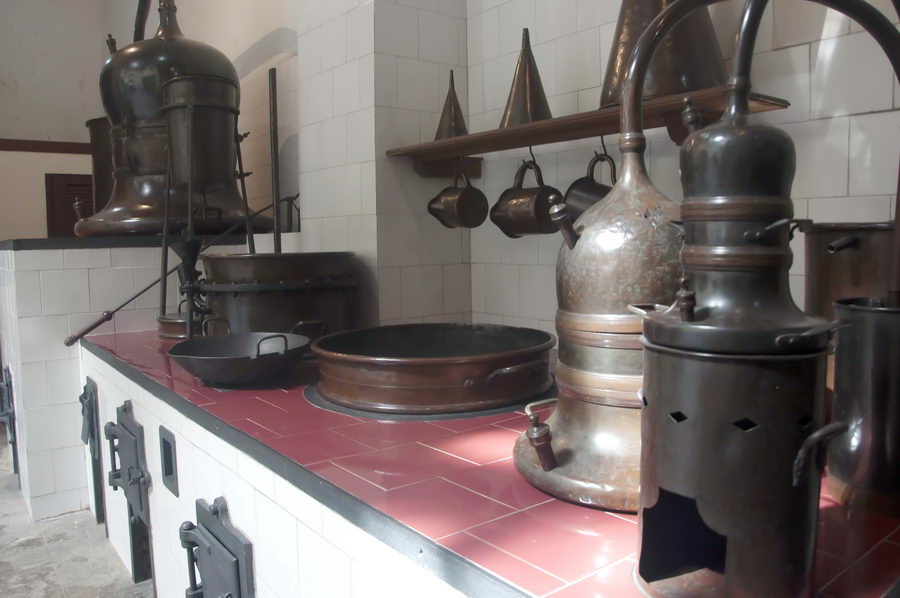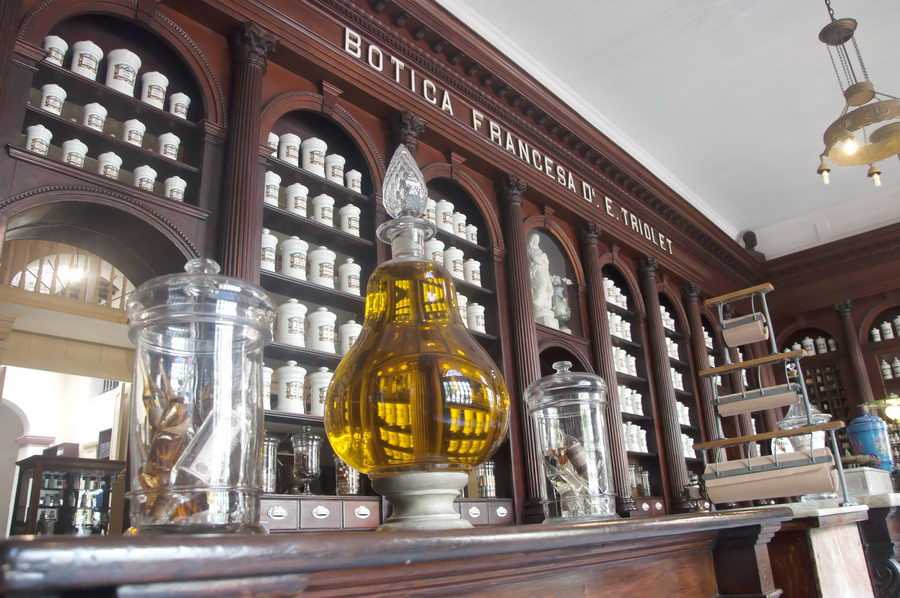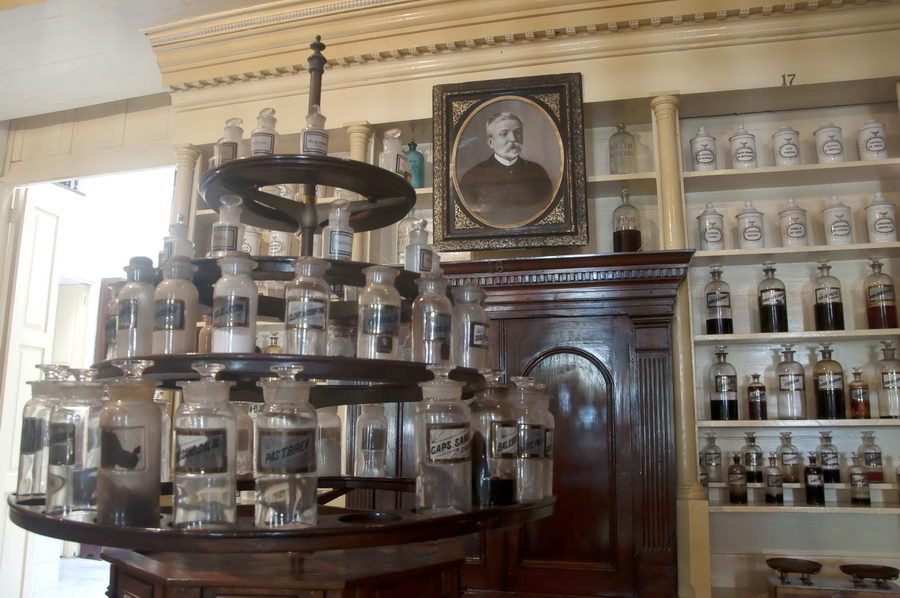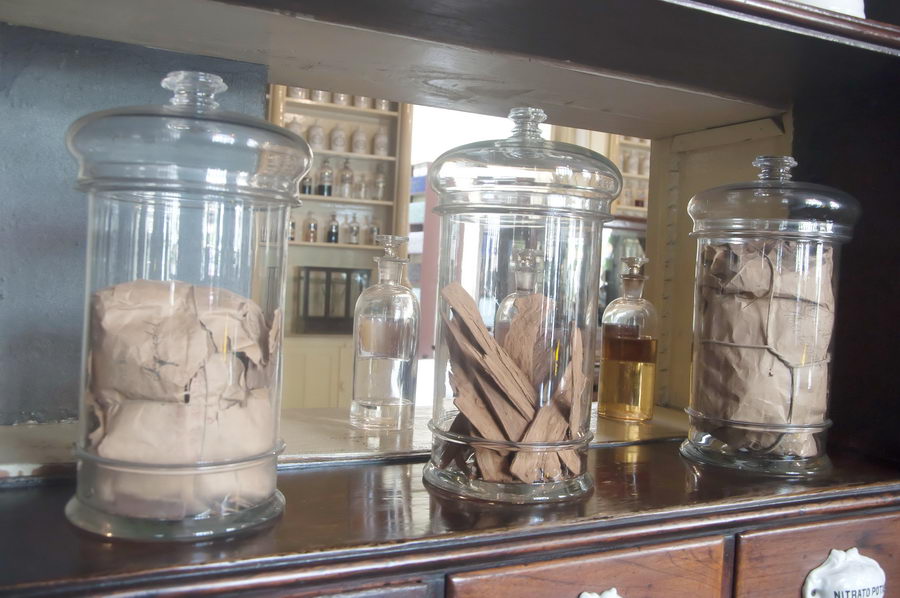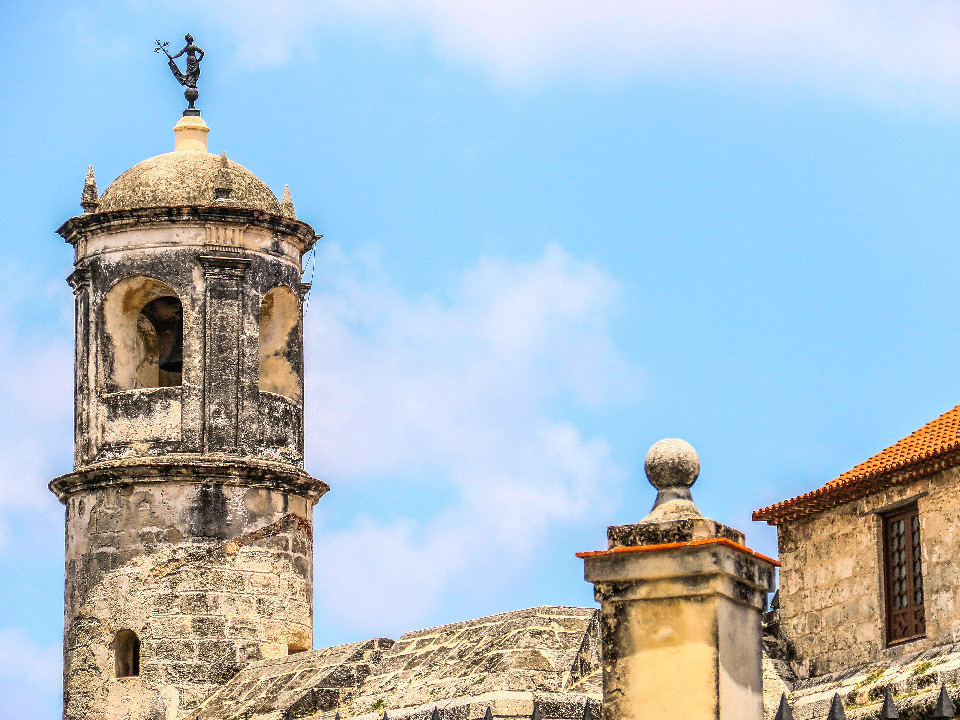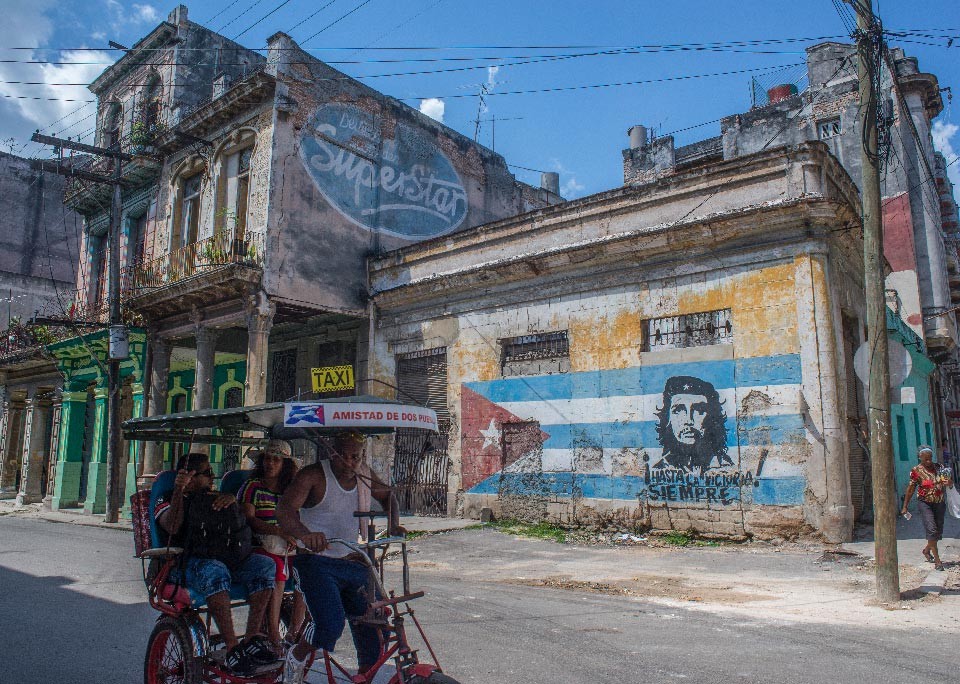A wonder was stopped in time; the French Botica of doctor Ernesto Triolet, later turned into the Pharmaceutical Museum of Matanzas. Located in the central Park of La Libertad, it is a patrimonial jewel admired by hundreds of foreign visitors from all latitudes.
In that space “the only French apothecary of the end of the 19th century that exists in the world is conserved, we work to show that exclusivity, to get many people to recognize its authenticity. The environment is completely different from other museums, because there is a sense of homogeneity in the way in which assets are exhibited and in the work of the pharmacy »
«The greatest impact on visitors occurs when the high degree of conservation is verified, even though it is a pharmacy with 136 years of existence. However, it maintains its original structure, which is not common in other entities of its type ». For this reason, visitors are delighted.
Pharmaceutical Museum of Matanzas
A WORK OF ART
The story tells that in 1876 Dr. Ernesto Triolet Teliebre, who had been invited to Cuba by his colleague Juan FermÃn de Figueroa, founded with this a French apothecary in Sagua la Grande, which offered its services to sugar mills in the area .
A hospital pharmacist in Paris, Triolet had fallen in love with Mrs. Justa de Figueroa, sister of Juan FermÃn, who died shortly after the pharmacy opened. It was with the fortune that left him that it was possible to build and supply this pharmacy in Matanzas.
“Triolet brought from France the imprint of scientific development in the pharmaceutical sciences of the nineteenth century, which was very strong, but in Latin America it was an exception. It is at that moment when the Cuban pharmacy was born, when the three most important pharmacy schools in the world converged: the French, through Triolet, who graduated in Paris; the Spanish, by Juan FermÃn who studied in Madrid, and the North American thanks to the training of MarÃa Dolores in New York.
“In Matanzas they faced the way and use of medicinal plants that was different from how they were used in the places where they studied, and at the same time they included the medicinal cultural heritage of African blacks. When the formulations are analyzed, this evolution towards a Cuban pharmacy is appreciated ».
The substances that are observed inside the jars are the originals, while in this space all the work of the pharmacy is conserved, something exceptional, because you can know what was prepared every day, because it is included in the recipe settlement books , which have been digitized in 55 volumes with more than half a million formulas prepared. The doctor who prescribed the recipe, the composition of the formula, the general use, the price, the consecutive number of the prescription, and, in some cases, who the medication was for, was established. From the patrimonial point of view and the history of this place is very important. You can study the life of a doctor, the periods of epidemics, the characteristics of the plants, and so on
.
HISTORY OF AN ILLUSTRATING FAMILY
In 1900 the founder Ernesto Triolet participated with eleven medicines at the Expo in Paris, where he obtained the Gold Medal. But there he contracted pneumonitis that took him to the grave on December 19.
On January 16, 1964, when the pharmacy was closed, two formulas were prepared by Ernesto Triolet Figueroa: one commissioned by Dr. Monterrey, and the other by Dr. Alfredo Triolet Figueroa, son of the founder of the pharmacy. When in November of 1963 they nationalized the pharmacy, then he proposed that they turn it into a museum. If it passed to patrimony, it would leave it as it was. Thus, the 1st. de Mayo opened as the first pharmaceutical museum founded in Latin America.
We opted for it to be declared a Cultural Heritage of Humanity, because it meets all the foreseen conditions. It deserves it, and from there the degree of protection will be greater. We present the file so that the documentary collection of recipe settlement books is also declared Memory of the World ».
WONDERS OF CUBA
The first room was destined to the sale of the population. It has three stained glass doors as well as a handmade cedar bookcase, in addition to the bohemian crystal pediments, the Carrara marbles and the image of the Immaculate Conception carved in white marble.
In the rebounds, where medicines were prepared (there is a collection of old porcelain bottles), there are arches with innumerable products, such as essences, fluid and soft extracts, and those aimed at formulations (alcohols, tinctures, chemical and natural materials).



